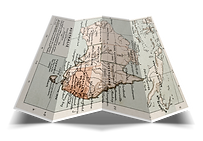ELEMENTARY REVIEW
APPS AND RESOURCES
THE
Google Earth
See anything! I mean ANYTHING. Well, except for Pyongyang.
By Justin Hume
 Google Earth Review |  Full Access For FreeYou have access to viewing any location in the world, for free. |  3D modelsThe presence of 3D models allow you to fly through a city as though you were a bird. |
|---|---|---|
 Uh-ohSometimes you see things that you should wish you had not, like this man holding a massive gun. Weird, hey? |  Google Street ViewYou can also get down to the street level to see real pictures of the environment instead of just satellite photos. |


Age Appropriate
6.5
8.5

Presentation Effectiveness
10

Engagement
Citizenship
10

6
Perspective
Range


SCORE
8
Respect


49 / 60 =

A-
A-
Overview:
Google Earth is a wonderful, free, program that allows anyone the ability to see their own house. Or a famous landmark. Or do their geography homework. Or pretty much anything else that has to do with viewing a constantly updated satellite view of the earth, matched with labels, demographics, computer led tours, and 3D models. The brilliance behind Google Earth is that it integrates so many features and information so as to take something that would have taken a Post-graduate degree and hundreds of hours of research, and place it in the hands of grade four kids.
Lesson Applications:
While Google Earth can be extended to potentially be use in all subject areas, it is perhaps lends itself most easily to social studies, which of course comes at no surprise. A specific use can come in the following form:
Students will use Google Earth to search for and discover the badlands, particularly the area surrounding Dumheller. The teacher will first demonstrate how to do this using your own computer connected to the smart board or projector. They will use Google street view in combinations with photographs taken in the area to notice ten different features of Drumheller including different types of vegetation (or lack thereof). While the students may not be able to name the vegetation, describing the vegetation will allow the teacher to scaffold by providing names.
Google Earth is strongly connected to helping students "appreciate the diversity of elements pertaining to geography, climate, geology and paleontology in Alberta." Students may see for themselves through the application the immense diversity of geographical features in Alberta. It allows children to discover through their own exploration what the features of Alberta exactly are. They can see the sweeping landscape, bodies of water, and even up close and personal with Google Streetview. The hundreds of data layers only add to the usefulness and scalebility presented in Google Earth.
Strengths:
-
Virtually any platform with internet can run Google Earth, that includes Mac, PC, Linux, Android, iOS.
-
You have the entire world at your finger tips; the possibilities are endless.
-
Google Street view allows you up close and personal high-resolution images that allow students to actually feel as though they are being transported to another place.
-
Free and open source—anyone can suggest a change.
-
View 3D models of buildings and terrain altitude differences.
-
The search, point, click, and zoom usability is fairly intuitive.
-
You are not just limited to the earth, you may also explore the moon and mars.
Weaknesses
-
Integration of Youtube allows for students to potentially click their way to explicit material.
-
Some of the features are overly complicated to use (such as historical maps).
Modifications
-
Certain features (such as Youtube) should have a disable feature so as to eliminate access to explicit material.
-
No teaching features exist beyond tours and the Wikipedia layer. There is a lot of hard data. Student-friendly quizzes or games such as “Where in the World is Carmen San Diego?” would add a significant aid for teachers developing lessons.